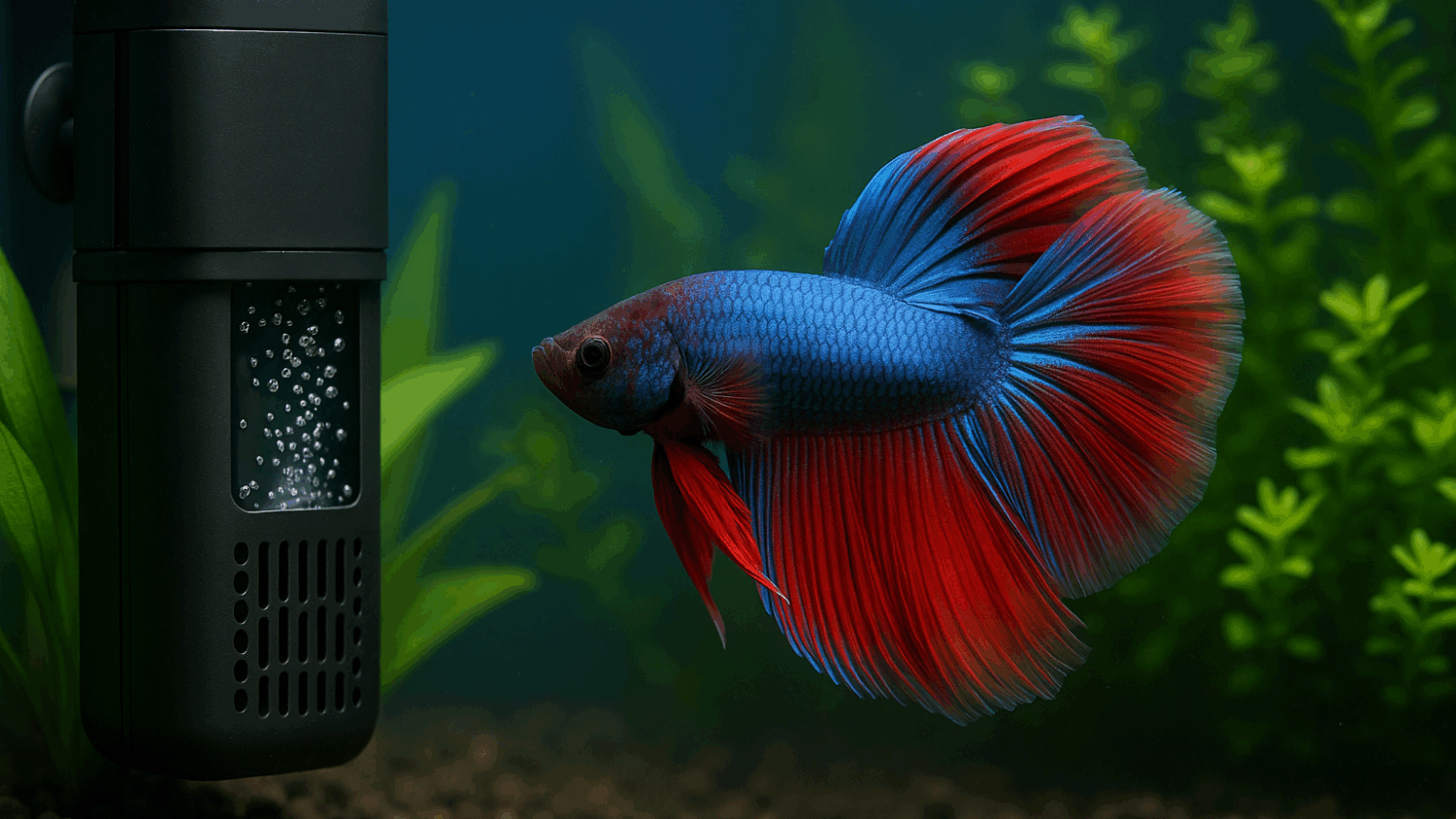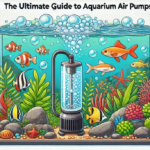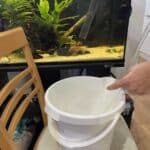Best 5 Filters for Betta Nano Tanks (2025)
If you’re setting up a nano aquarium for a lovely little Betta splendens (betta fish), you may have heard the myth that “bettas don’t need filters”. But the truth is, they do. Especially in a nano tank environment (say 5-10 US gallons or roughly 19-38 liters). A nano tank has less water volume, less buffering capacity, and so fluctuations in water quality hit harder and faster than in larger tanks.
Here we’ll walk through why your betta still needs a filter even in a small tank, what key features to look for when choosing a filter for a betta nano setup, the main types of filters suited for these small setups, my top 5 filter picks for 2025 (with pros and cons), common mistakes to avoid, and some frequently asked questions.
On this page:
Does Your Betta Need a Filter?
Many beginners think a small tank means no filter is needed. But here’s why that’s misleading. Even with a small bioload, say one betta plus maybe a few plants, fish waste and leftover food produce ammonia and nitrite (toxic elements to your fish). A filter hosts beneficial bacteria that convert ammonia into nitrite, and then into the less harmful nitrate, helping to keep the water safe. This biological filtration matters enormously, even in tiny spaces.
In a nano tank, the water volume is small, so any change like a waste spike, food decay, or plant die-off causes quick shifts in parameters. A filter helps maintain more stability by continuously circulating and cleaning the water. Here’s something interesting that many people don’t realize: even in small tanks, the biological media in your filter still needs time to “cycle” and build up those beneficial bacteria colonies. Many beginners skip the filter thinking “my tank is tiny so it’s okay,” but unfortunately it’s not. You might also think you can just change the water daily in such a small volume, but too-frequent complete water changes actually kill off the beneficial bacteria you’re trying to cultivate. A filter, particularly a cycled filter, helps you avoid that problem entirely.
Now, gentle water flow is absolutely key for bettas. They originate from slower-moving waters and genuinely dislike strong currents. Bettas have a labyrinth organ, which lets them breathe atmospheric air directly. This means that while oxygenation is important, high surface agitation and current from a filter can actually stress them out. So a good filter or a betta nano tank will provide gentle flow, allowing good oxygen exchange happening at the surface, but definitely not a torrent, so your fish isn’t stressed or blown around the tank.
Another quirk of nano tanks, specifically, is that the surface area to volume ratio is higher than in larger setups. This means water cools and warms faster, and dissolved gases change more quickly too. A filter that gently circulates near the surface helps keep that gas exchange stable, which is particularly important in these smaller environments.
Some filters come with built-in flow deflectors or spray bars to soften their output. But even if yours doesn’t have this, adding a simple flow diffuser like a sponge over the outlet or a tube extension can make a huge difference in your betta’s comfort in a nano tank, even when the filter itself isn’t specifically marketed for bettas.
Key Features to Look for in a Nano Tank Filter for Bettas
When you’re shopping for the best filter for your betta nano tank, there are several features you should prioritize to ensure both your fish and you are happy with the setup:
Adjustable Flow Rate
First and foremost is adjustable flow rate. Because bettas dislike strong currents so much (as mentioned above), a filter with adjustable flow, whether through a valve, diffuser, or spray bar, allows you to dial it down to a comfortable level. Without this adjustment capability, you risk the flow blasting your poor betta into the corner, which is both stressful and exhausting for them.
Quiet Operation
Quiet operation is another important consideration. Many nano tanks end up in bedrooms, offices, or living spaces where noise matters. A noisy filter can stress your fish and annoy you, especially at night. Look for low-noise units, though be aware that even some trusted brands occasionally have noise issues according to some users.
Compact Design
Aim for a filter with a compact design, this will keep with the aesthetic, and is great if you’re working with limited space. Nano tanks typically range from 2 to 10 US gallons (roughly 7.5 to 38 liters), and they simply don’t have room for bulky equipment. A filter must fit without dominating the tank visually or spatially. Internal filters, sponge filters, or slim hang-on-back styles are often your best bet here.
Multi-Stage Filtration
Multi-stage filtration is ideal when you can get it. This means the filter handles mechanical filtration (removing physical debris), biological filtration (providing a home for beneficial bacteria to grow), and potentially chemical filtration (using activated carbon or similar media if needed). Filters that support these multiple stages tend to keep water clearer and healthier for longer periods.
Easy Maintenance & Cleaning
Finally, easy maintenance and cleaning shouldn’t be overlooked. Nano tanks often mean more frequent checks and adjustments. Filters that are straightforward to open, clean, or whose media can be replaced simply will make your life so much easier in the long run.
Types of Filters Suitable for Betta Nano Tanks
Here are the main filter categories that work well for betta and nano setups, each with their own strengths and weaknesses to consider.
Sponge Filters (Gentle and air-driven)
These draw water gently through a sponge via air bubbles, creating very low current that’s excellent for bettas. They’re great for small tanks, fry, and planted setups. The very gentle flow is safe for the long fins of bettas, they’re inexpensive, and they provide strong biological filtration. The main downside is they require an air pump if one isn’t built in, and they offer less mechanical “polishing” for debris removal compared to power filters.
Internal Power Filters
These sit inside the tank itself, are nicely compact, and provide decent all-around filtration. They look neat with their internal placement hiding most tubing, and they’re accessible for cleaning. However, their flow may be stronger than ideal for a betta unless you adjust it, and being inside the tank they do take up some of your limited space within a small tank.
Hang-On-Back (HOB) Filters
These hang on the rear or top edge of the tank, offering a good balance of power and accessibility. They typically have more filter media capacity than other options and are easier to access for maintenance. The potential downsides are that the flow and output may be too strong if not modified with a baffle or diffuser, and they do occupy space at the back and top of your tank.
Corner Filters
This is an older style that’s less common nowadays, but still usable in very small tanks. They’re low cost and simple to operate. However, they have limited filter media capacity and less flexibility when it comes to controlling flow.
Mini Canister Filters
These are the premium choice for advanced nano setups, like heavily planted betta tanks or situations with slightly higher bioload. They offer great filtration power and excellent flexibility with media choices. The tradeoffs are that they’re more complex to set up and maintain, more expensive than other options, and may produce stronger flow than is comfortable for a betta unless carefully managed. But they are great in that they typically require less cleaning than the other filter options due to their greater volume of biomedia.
5 Best Filters for Betta Nano Tanks
Here are five solid options that tick the right boxes. I’ve broken down the strengths and weaknesses of each one so you can make a confident choice. In no particular order:
AQUANEAT Bio Sponge Filter (Betta/Nano)
This sponge filter is designed specifically with fry, bettas, and nano tanks in mind, and works beautifully in setups up to around 20 gallons (roughly 75 liters). It provides both mechanical and biological filtration, while keeping flow to an absolute minimum, which is exactly what your betta needs.
Pros: Very gentle flow. Perfect for bettas. Has a safe sponge construction so won’t trap fins or small fry. Easy to clean (rinse in tank water).
Cons: Requires an external air-pump (if not included). Less mechanical “power” than a traditional power filter.
Key detail: Ideal if you want a mellow setup, especially for lower bioloads.

AQUANEAT Sponge Filter – Small (Up to 10 Gal)
This one’s from a similar brand but specifically aimed at very small tanks, around 10 US gallons (roughly 38 liters) or less. It’s a solid budget-friendly sponge option if you’re working with a smaller setup or on a tighter budget.
Pros: Lower cost option. Still offers gentle flow and a safe design for bettas. Very good for small tanks and bowls.
Cons: Again, needs air pump. May be too minimal if you have a higher bioload (monitor parameters for a few weeks, if concerned).
Key detail: Best when your tank is truly “nano” in size and lightly stocked.
Fluval Nano Aquarium Filter
If you’re looking for something with a bit more oomph for your nano tank, this filter strikes a nice balance. It delivers stronger filtration capability than basic nano filters, yet it’s still thoughtfully sized to fit comfortably in smaller aquariums without overwhelming them. Think of it as the sweet spot between gentle filtration and the power you might need.
Pros: More robust mechanical and biological filtration. Brand reliability.
Cons: In some setups users report strong flow or noise issues (low hum).
Key detail: Good choice if you have a nano tank but plan a bit more (live plants and tank structure/decorations) to soften the flow for your betta.
Marina Slim Power Filter S10
This sleek hang-on-back filter is perfect when you’re working with limited space but still want reliable filtration. Its slim profile won’t dominate your tank’s appearance, and the adjustable flow is a real bonus, especially if you’re keeping delicate swimmers like bettas who prefer gentler currents. It’s designed with small tanks in mind, giving you the filtration you need without creating a turbulent environment in the tank.
Pros: Adjustable flow. You can dial it down so the current is gentle enough for your betta. HOB design, easier to maintain, media is accessible.
Cons: HOB takes up space on the top/back of the tank, which might interfere with lid/lighting, depending on your tank design. Even with adjustment, power filters usually create more circulation than sponge filter, so do monitor how your fish respond.
Key details: Ideal if you want a visible “powered” filter (rather than invisible sponge) and expect somewhat higher filtration needs, but still want to keep the flow gentle. Use a flow diffuser/deflector if needed to further soften the output.
Aqueon QuietFlow E Internal Power Filter Extra Small (3 Gallon)
A compact internal power filter designed for aquariums up to 3 gallons, this filter offers mechanical, chemical, and biological filtration in one easy-to-install unit. It’s fully submersible, quiet, and auto-starts after cleaning or power interruptions; making it a convenient choice for small tanks and beginner setups. It’s also easy to set up, with suction cups and clips making it quick to mount inside framed or frameless tanks.
Pros: True to its name, this filter runs with minimal noise. Ideal for bedrooms or offices. All-in-one filtration. Simple installation. Auto-start pump.
Cons: Out of the box, the current can be a bit strong. Takes up space inside the tank. Cartridge cost, requires periodic cartridge replacements (~every 4 weeks), which adds minor ongoing expense (but can be swapped out for a more permanent solution of a filter sponge.)
Key details: Best for very small nano tanks (≤ 3 gallons) with a low bioload. Place the outlet near the surface to promote gentle flow and oxygenation without disturbing your fish.
My Top Pick & Recommendation
For most typical betta nano setups, somewhere in the 5 to 10 gallon (20 to 40 L) range with a low bioload and maybe some plants, consider leaning towards the AQUANEAT Bio Sponge Filter (Betta/Nano; #1 above). It can be used to create a gentle and safe environment that bettas would love, and there’s something to be said for keeping things beautifully simple. Now, if your setup is a bit more demanding, say you’ve got a well-planted tank or you’re planning to add a slightly higher bioload to the tank, then you might want to consider stepping up to something like the Fluval Nano (#4) or the Marina Slim (#5). Both offer that extra filtration capacity while still being suitable for the needs of smaller tanks.
Common Mistakes to Avoid When Using Filters in Nano Tanks
Let’s talk about some pitfalls that trip up even the best of us:
Choosing a filter that’s too powerful: One of the biggest mistakes is grabbing a filter that’s simply too powerful for the job. Picture this: a filter rated for a 30-gallon (~114 L) tank churning away in your cozy 5 to 10-gallon setup, it’s going to create a current that’s more like a washing machine than a peaceful stream. Your betta will spend all their energy fighting the flow, and potentially damage their fins.
Forgetting to baffle or diffuse the water flow: Another common oversight is forgetting to baffle or diffuse the water flow. Even a moderately powered filter can blast your betta directly if the output isn’t redirected properly, and that constant bombardment can lead to stress and, over time, even damage those delicate fins. It’s worth taking a few minutes to set up a simple baffle using a water bottle or sponge.
Using filters without biological media: Then there’s the biological media issue. Some budget filters cut corners by skipping adequate bio media, which might not seem like a big deal at first, but it really undermines your tank’s long-term water quality. The beneficial bacteria that colonize this media are your invisible workforce, breaking down harmful ammonia and nitrites day in and day out.
Ignoring maintenance or hitting “install then forget”: There’s also a tendency to treat nano tanks with a “set it and forget it” mentality. Sure, they look simple and compact, but they actually require consistent attention. Neglecting regular filter maintenance in a small water volume can let problems snowball quickly, what might be a minor issue in a larger tank becomes critical much faster when you’re working with just a few gallons.
Assuming “no filter = betta is fine”: Finally, a reminder that there’s a persistent myth that bettas don’t really need filters at all. Yes, bettas are remarkably hardy and can survive in low-flow, minimal setups: that’s part of what makes them so popular. But here’s the thing, they will be much happier if not just ‘surviving’. A filtered tank with stable water parameters gives your betta the chance to truly flourish, you’ll see brighter colors, more active behavior, and better overall health.
Frequently Asked Questions (FAQ)
In case you jumped straight here and haven’t read the above text:
Q: Do bettas really need filters in small tanks?
Yes, they really do, and here’s why. While bettas have earned their reputation for being hardy fish, they still benefit enormously from filtration. A good filter does more than just move water around; it helps maintain stable water chemistry and keeps oxygen levels healthy. This is especially important in nano tanks, where the small water volume means that any shifts in parameters can happen alarmingly fast. What might be a gradual change in a larger tank can become a dangerous swing in just a few gallons of water.
Q: How do I reduce filter flow for my betta?
There are several gentle ways to calm down an overzealous filter. Adding a sponge diffuser to the output works beautifully to break up that strong jet of water. You can also redirect the output so it flows along the water surface or against the tank wall rather than straight into the swimming space. Some users get creative and partially block the outlet with décor, just be careful not to restrict it so much that you impede the filter’s function and potentially damage the motor in it. And of course, if you’re shopping for a new filter, look for one with built-in flow control or an adjustable valve, which gives you the flexibility to dial things in perfectly.
Q: Can I use a sponge filter in a 2-gallon tank (~7.5 L)?
Technically, yes, you can run a sponge filter in a 2-gallon setup, but let’s be honest about the bigger picture here. A 2-gallon tank is really pushing the limits for long-term betta keeping; it’s just such a tight space with very little room for error. If you do go this route, you’ll need to be absolutely meticulous: keep the flow extremely gentle, stay on top of maintenance with near-religious frequency, and keep your stocking and plant load very light. It’s a lot of careful balancing for a setup that’s already working against you.
Q: How often should I change filter media?
This depends on what type of media we’re talking about. Mechanical media like foam pads and activated carbon can be changed or rinsed when they start looking grimy, usually every few weeks to a couple of months, depending on how heavily stocked your tank is. But here’s where people often go wrong: biological media is a different story entirely. This is where your beneficial bacteria live, and you should never replace it all at once. Only swap it out when it’s genuinely worn down or damaged, and even then, do it gradually, maybe 25% at a time. This protects that precious colony of bacteria that’s working so hard to keep your water safe and stable. (Don’t get caught up with the marketing that tries to get you to regularly replace it.)








